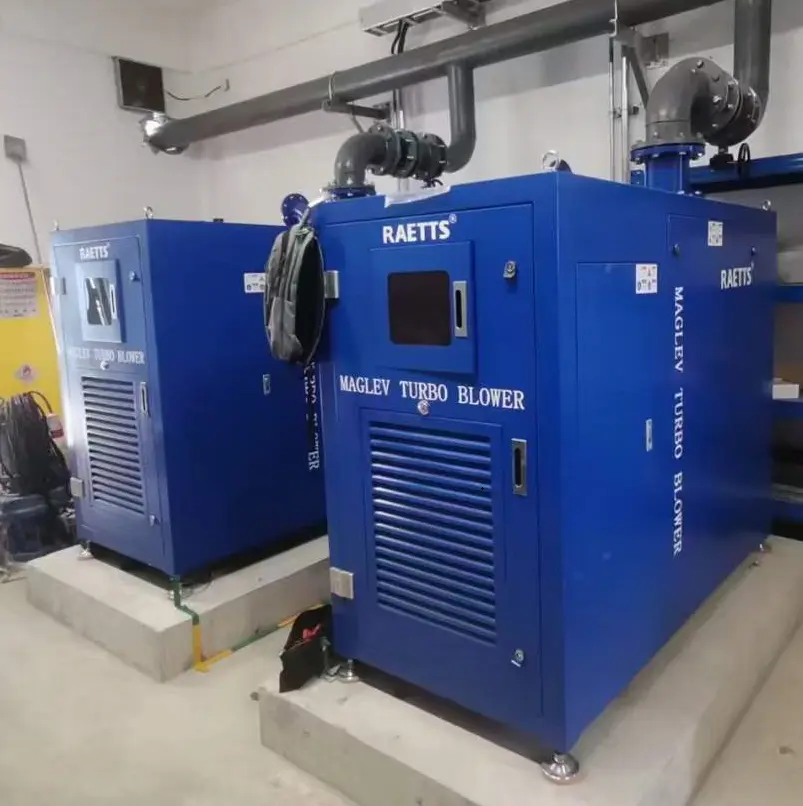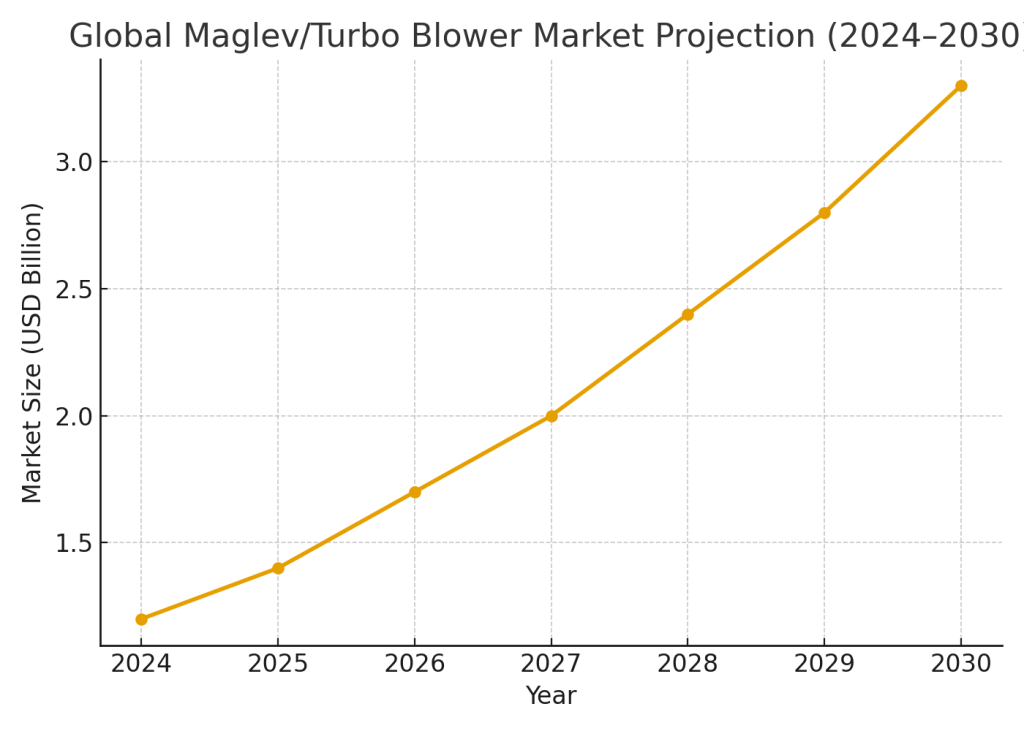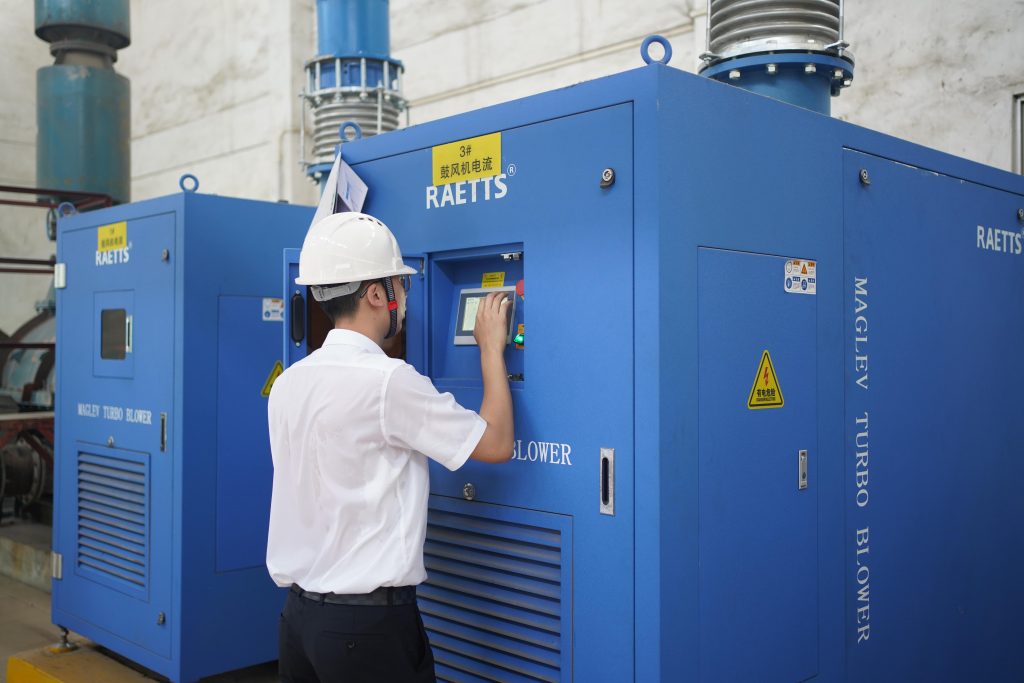For decades, wastewater treatment plants (WWTPs) have struggled with one major challenge: energy consumption. Aeration alone can account for 30–60% of a plant’s total electricity demand, making it the single largest operating expense for most facilities.
In this context, magnetic levitation (maglev) blowers—also referred to as high-speed turbo blowers with magnetic bearings—are emerging as a transformative technology. By eliminating mechanical friction and enabling high-efficiency, variable-speed operation, they have the potential to significantly cut both OPEX and carbon emissions.
But beyond today’s cost savings, what’s next? Let’s look at the three major trends that will define the role of maglev blowers in wastewater treatment over the next five years.

Recent market reports project strong growth for maglev blower systems. By 2030, the global maglev/turbo blower market is expected to reach several billion USD, growing at a compound annual growth rate (CAGR) in the mid-to-high single digits, with some regions even higher.
Why? Two reasons stand out:
Energy savings: Replacing legacy Roots or positive displacement blowers with maglev technology typically reduces aeration power demand by 30–40%, translating directly into lower energy bills.
Policy push: Governments are tightening energy-efficiency standards for municipal and industrial facilities, while offering incentives for upgrading to high-efficiency equipment.
For wastewater utilities, this means that what was once a “nice-to-have” upgrade is quickly becoming an industry standard.

Technology adoption in wastewater is no longer just about physical hardware—it’s increasingly about data. Leading blower manufacturers now integrate sensors, IoT connectivity, and advanced control systems directly into their maglev blowers.
This enables:
Predictive maintenance: Monitoring vibration, temperature, and magnetic bearing status in real time helps operators predict failures before they happen.
Optimized performance: Digital twins and AI-driven control systems can continuously fine-tune airflow and pressure, ensuring energy use matches real demand.
Remote service models: OEMs can support WWTP operators via cloud-based diagnostics, reducing the need for on-site interventions.
For plant operators, this shift means higher uptime, reduced maintenance costs, and better decision-making.

The world’s regulatory landscape is changing rapidly. Wastewater plants are under growing pressure to meet carbon reduction targets and improve energy efficiency. Maglev blowers directly align with these priorities by:
Cutting electricity demand in one of the most energy-intensive processes (aeration).
Enabling flexible operation, which supports demand-response programs and integration with renewable energy.
Offering quantifiable emission reductions that could be tied to carbon credits or green financing mechanisms in the near future.
In short, investing in maglev blowers is not just about cost efficiency—it is about ensuring compliance with future environmental regulations and positioning wastewater utilities as leaders in sustainability.
Maglev blowers represent more than just a hardware upgrade. They embody a broader shift towards:
Smart wastewater treatment, where digitalization drives efficiency.
Sustainable operations, aligned with global net-zero ambitions.
Long-term cost optimization, with reduced total cost of ownership (TCO).
For wastewater treatment leaders, the next five years will not only be about replacing old machines—it will be about reimagining how aeration systems fit into a digital, low-carbon future.
Question for readers: Is your facility considering the switch to maglev blowers? What’s the biggest driver in your case—energy savings, compliance, or digital transformation? Feel free contact us to discuss how to upgrade your equipments.

PRODUCTS
CONTACT US
Asis HQ:Building 1, No. 3, Juyuan Second Road, Shangtun, Liaobu Town,Dongguan City, Guangdong Province,China
Europe HQ:
NeumarktstraBe 17,32052, Herford, Germany(R&D,Production&Sales)